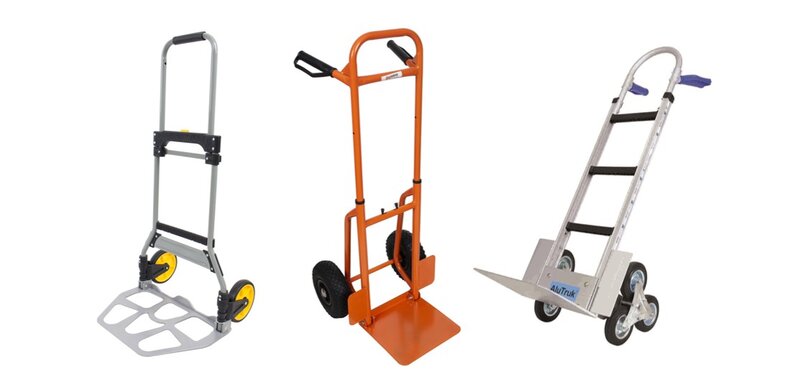
When it comes to material handling, the sack truck is a hard piece of equipment to beat. Sack trucks are a great tool that makes the manoeuvring of loads quick, easy, and can reduce the risk of injury during handling. To use a sack truck safely, follow all relevant guidelines and our safety tips.
Although a sack truck is an incredibly useful tool, it’s important to ensure that you’re using it correctly. Incorrectly using a sack truck can be as potentially dangerous as trying to handle heavy loads without the appropriate equipment.
Here are some of our top tips on staying safe when using a sack truck:
Sack Truck Safety Guide
1) Conduct a risk assessment
Risk assessments are an important part of an occupational health and safety management plan, and the first step to using a sack truck safely. Conducting a thorough risk assessment can reduce the risk of workplace accidents and allow preventative measures to be put into place.
If you’d like to read more about the official Health and Safety Executive advice on carrying out a risk assessment for activities involving the pushing or pulling of loads on wheeled equipment (such as sack trucks), check out the link below.
HSE RAPP Risk Assessment Guide
2) Be cautious loading and unloading
When it comes to sack truck safety, a lot of people assume that the only time you can sustain an injury is during the pushing and pulling of the truck. Whilst it’s very true that these are common scenarios for accident or injury to occur, you can also experience an incident whilst loading and unloading the sack truck.
Reduce the risk of incident when loading and unloading by ensuring that you’re using the appropriate form, and don’t try and lift more than you can comfortably manage. When lifting, make sure you lift with your knees, not your back.
3) Use appropriate force
Using appropriate force is the key to staying in control when using a sack truck. If moving a sack truck, aim to apply an amount of force equal to 2% of the load weight. For example, when moving a 200kg load, apply 4kg of force.
4) Assess Terrain
Planning your route before you start using a sack truck means that you will be better prepared for any events that may occur during your handling. For example, will you be walking up or down a steep slope? Perhaps you need to prepare for the possibility that the sack truck might slide out of your control. Will you be passing over uneven terrain where the sack truck might get stuck? Consider an alternate, safer route.
5) Don't overload
It might be tempting to load as much as you can onto your sack truck to try and reduce the number of trips you need to take. However, this can be dangerous and may even block your view. An obscured view when using a sack truck could lead to injury.
When loading up a sack truck, make sure you can always see over the top of the load, and that it is stacked safely enough that it won’t fall during transit.
6) Use correct form
Using correct form is one of the best ways to prevent injury when using a sack truck. Remember:
- Keep your back straight.
- Carefully pull on the handles to tilt the sack truck towards you.
- Lean the sack truck back on its wheel with the load resting against the backplate.
- When given a push, the sack truck should move easily.
7) Wear suitable shoes and PPE
Wearing suitable footwear and appropriate PPE is another important part of using a sack truck safely. This is a simple way to prevent sack truck related accidents before they occur. If necessary, wear a hard hat, protective gloves, and/or any other PPE that might be necessary. Always wear shoes that cover your toes that you can safely walk in (not flip flops). Depending on the load, it might even be necessary to wear specialist safety shoes.
* * *
When used correctly, sack trucks are an invaluable tool when it comes to material handling. They can be used in a wide variety of different environments, such as warehouses and retail stock rooms.
If you’re on the lookout for a new sack truck, SafetyLiftinGear have a wide range of different sack trucks. No matter what your needs are, you can find a sack truck suited to you.
Shop Sack Trucks
Read More: Manual Handling Weight Limit: How Much Can One Person Safely Lift?

